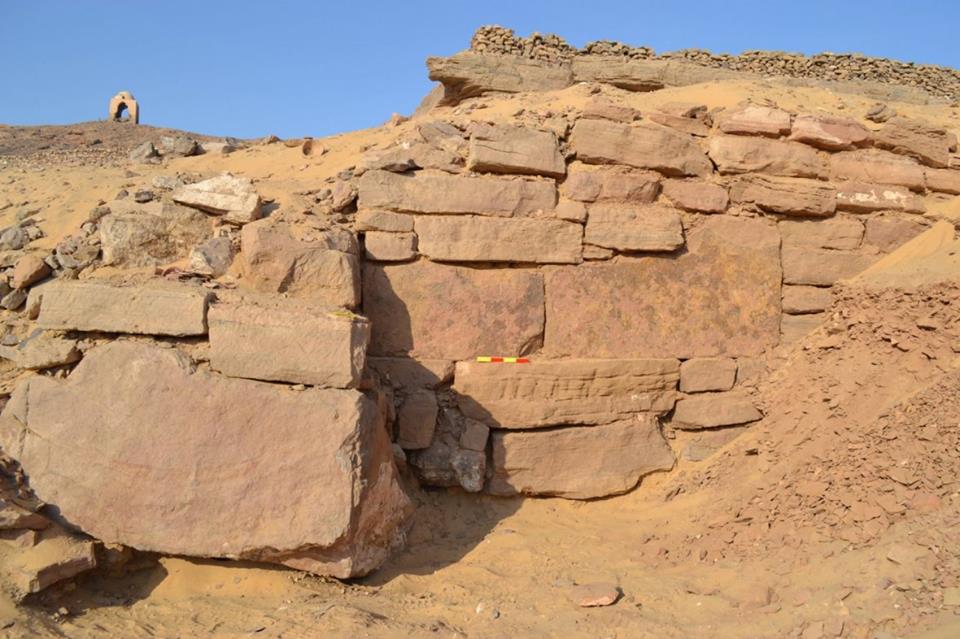On the territory of the Egyptian necropolis of qubbet El-Hawa discovered ancient wall. The Director of the Department of antiquities archaeological areas of Aswan and Nubia Nasr Salama called the discovery “staggering”.
Working on the territory of the necropolis, archaeologists have discovered an ancient wall, over which was laid a walking path. According to scientists, the wall protects the tomb, which lies more deeply. According to experts, the wall was built in 2278-2184 BC, but judging by the age found in her pots, it visited more than one hundred years later.
The necropolis of qubbet El-Hawa is very important for archaeologists, since it features many rock cut tombs of Ancient officials (2700-2180 BC) and Middle (2040-1783 BC) kingdoms.
A two-metre high ancient encroachment wall has been discovered below a visitors' pathway in the northern part of the West Aswan cemetery at Qubbet el-Hawa.
It follows and archaeological mission by the University of Birmingham and the Egypt Exploration Society (EES) Qubbet el-Hawa Research Project Group (QHRP), directed by Dr Martin Bommas of the University of Birmingham.
The newly discovered wall is thought to indicate the architectural support for the known tombs of the first upper terrace, including those of Harkhuf and Heqaib, who were governors of Elephantine Island during the Old Kingdom.
Owing to the landscape of Qubbet el-Hawa, the support wall helped to secure the hillside, and thus lower lying tombs, which were accessible by a causeway leading to a second terrace.
Carl Graves, a PhD student who worked alongside Dr Bommas on the project, said: "The findings are dramatically altering our understanding of the funerary landscape in this area during the Old Kingdom and First Intermediate Period in 2278-2184BC. I don't think anyone yet knows who the tombs might have belonged to."
Nasr Salama, General Director of Aswan and Nubia Antiquities, describes the discovery as "stunning" telling the Egypt Independent that it is now only a matter of time until new tombs are uncovered within the important cemetery.
Eman Khalifa, director of the pottery project within the QHRP, told the paper that the stone wall was dated by the pottery shreds embedded within the mortar used to build it. She said that the crushed pieces include parts of carinated bowls, executed in a style typical of the reign of King Pepi II from the Sixth Dynasty (circa 2278-2184 BCE).
The find was part of the project's successful first field season, which included the recent discovery of the long sought causeway of Sarenput I, thought to have been the first governor of the area at the beginning of the Middle Kingdom.

